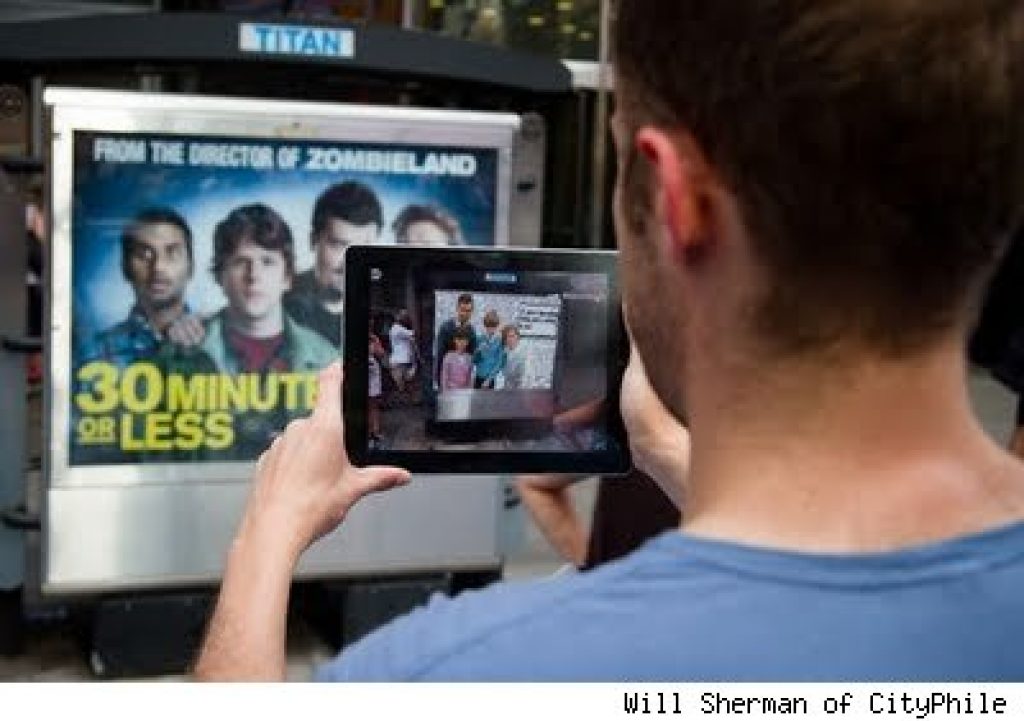As you may recall, I devoted the week-ago news writeup to the topic of augmented reality. How appropriate it seemed, therefore, to open up yesterday's USA Today and find the every-Monday Digital Traveler column focused on the topic of AR this week. The writeup headline, however, foreshadows the lukewarm critique that follows it; 'Augmented reality apps have some work to do.' From the article:
Given travelers' propensity to get lost and the limitations of 2-D maps, it's not surprising that travel companies — from guidebook publishers to online booking sites and ski resorts — are eager to try it. Yelp, TripAdvisor and Lonely Planet are just a few travel companies that have introduced augmented reality on their apps. There are also AR browsers, such as Wikitude, Layar and Junaio, that offer data from third-party providers. Augmented reality is a nifty and fun time-waster, but I don't think it's ready for prime time in its current form.
After reading author Roger Yu's reviews of mTrip, TripAdvisor, and Wikitude, I have to agree with his assessment, no matter that I'm intrigued by the potential hinted at by these first-generation implementation attempts. As Yu notes, AR "combines a camera, GPS and compass in a smartphone, so that the phone can "recognize" an object or spot that a user is pointing to by computing location data and displaying it on the screen." Practical issues that Yu struggled with included limited range, cluttered and otherwise confusing user interfaces, and both insufficiently comprehensive and inaccurate databases. Nonetheless, the product category will inevitably improve over time, aided by increasingly robust application processor SoCs, lower cost and (therefore) more abundant in-system storage capacities, and finer pixel pitch displays.
Speaking of AR, I've also recently come across several other intriguing application examples. Earlier-mentioned Junaio supports (among other things, and on iOS-based devices) automatic on-screen replacement of New York City-located outdoor billboards with drawings and paintings from independent artists and activists. And speaking of earlier-mentioned products, one day later, I came across a writeup on Layar's latest development twist, called Vision. As the Slashgear coverage notes, "This is an AR platform that will allow for cool AR layars that need no tags or scan codes to work. The Vision platform is able to recognize real world objects and show digital content on top of them." Layar Vision documention is now available, with beta code for Android and iOS to follow shortly and the final product currently scheduled to appear some time in the fourth quarter.
One day after that I learned about the Augmented Reality Korean Unification Project, which deletes "weapons, checkpoints, fortifications, barriers, walls, and all reminders of the ongoing conflict from the Korean landscape" if you point "supported smartphones" at them, and therefore optimistically claims that it "erases the scars left by years of conflict between North and South Korea."
Over-idealistic? Perhaps. Still, an admirable aspiration. And a week after that, I read about an upcoming (late September) AR conference, sponsored by AR veterans Metaio and this year based on the theme “From a Vision to a Roadmap”. Check out the following promotional video co-developed by Metaio and the Media Processing Division of ARM, i.e. Falanx Microsystems, which ARM acquired in mid-2006 and has subsequently transformed into the Mali graphics core family:


